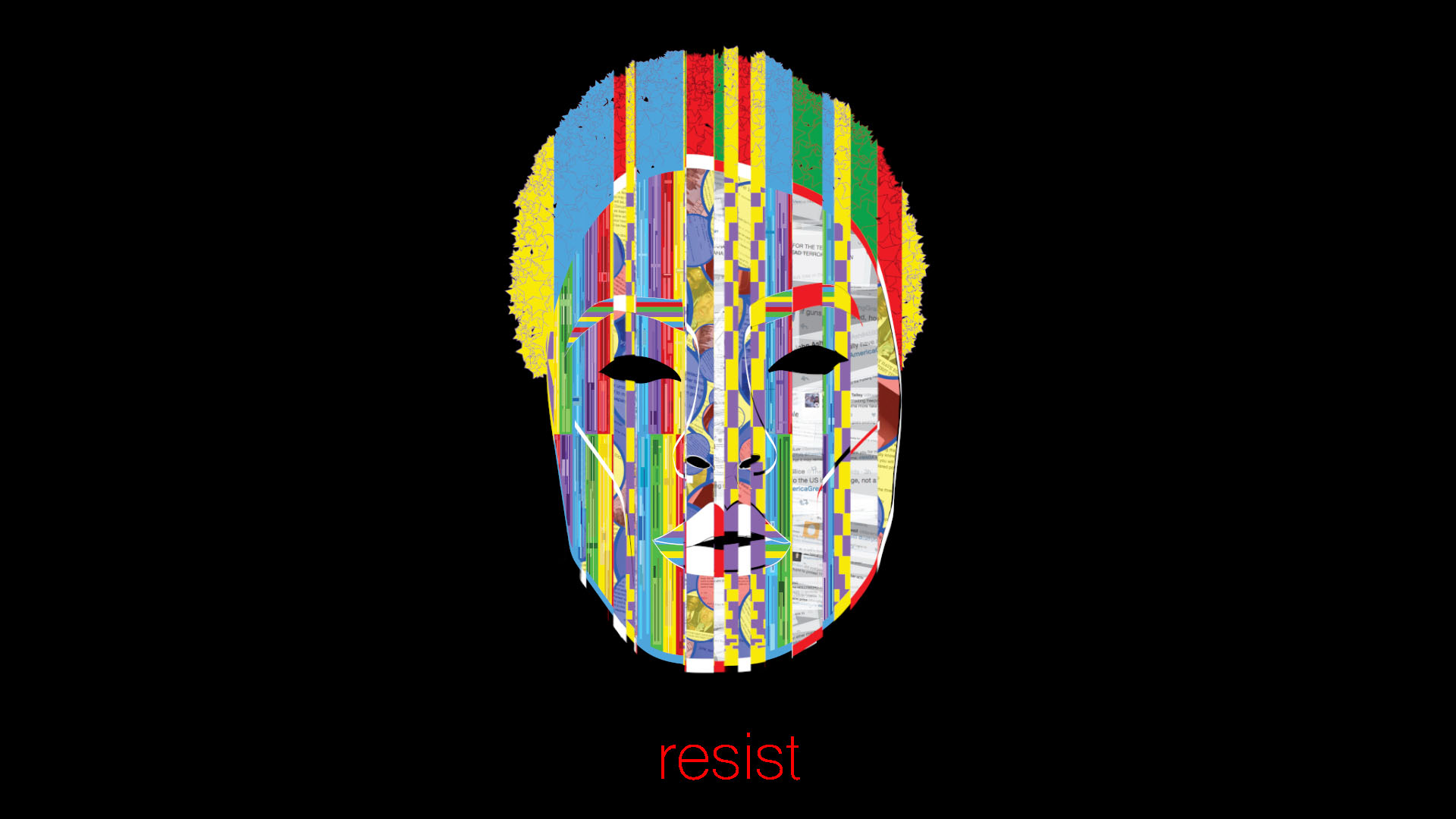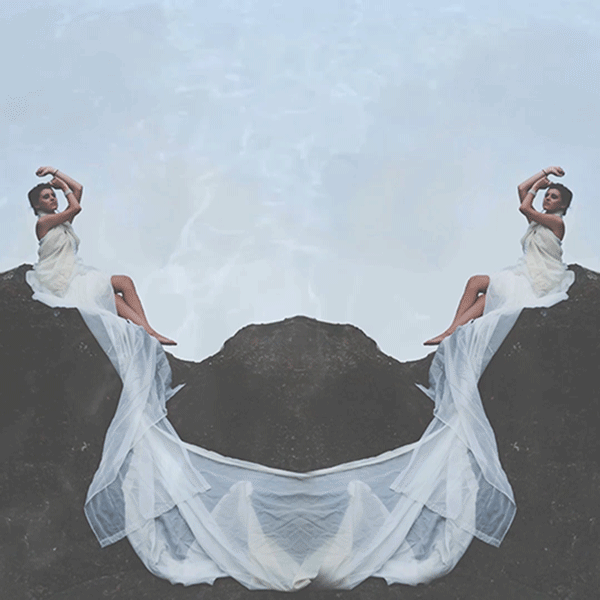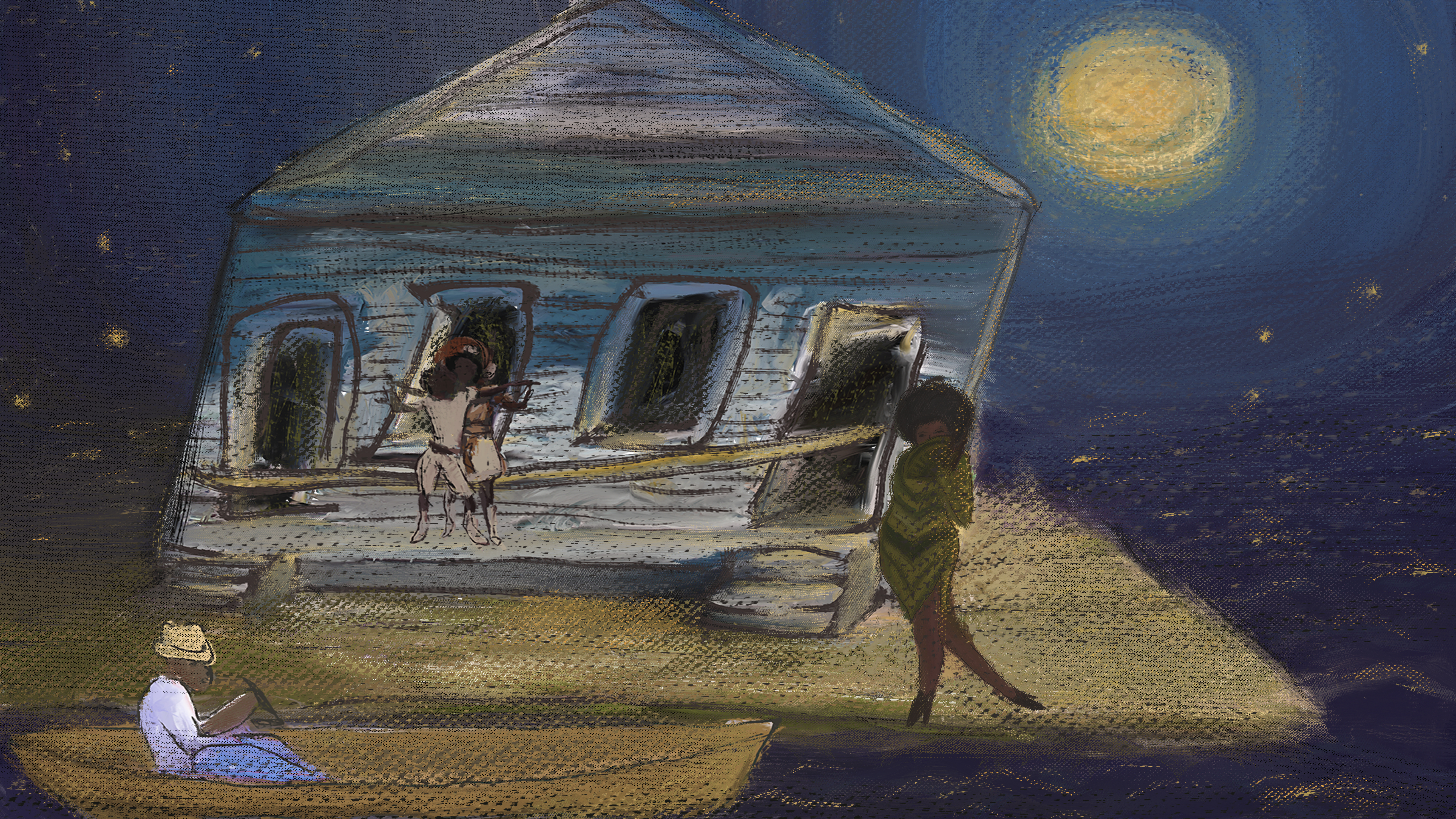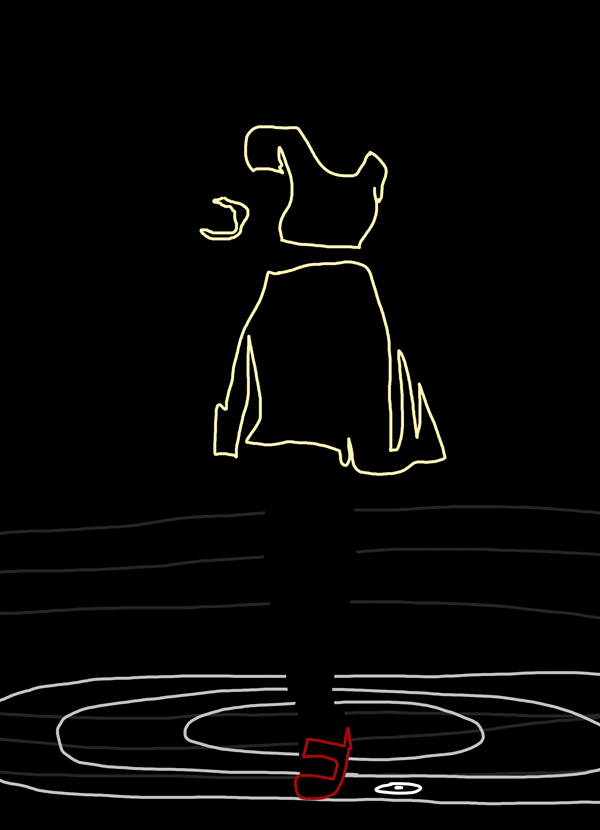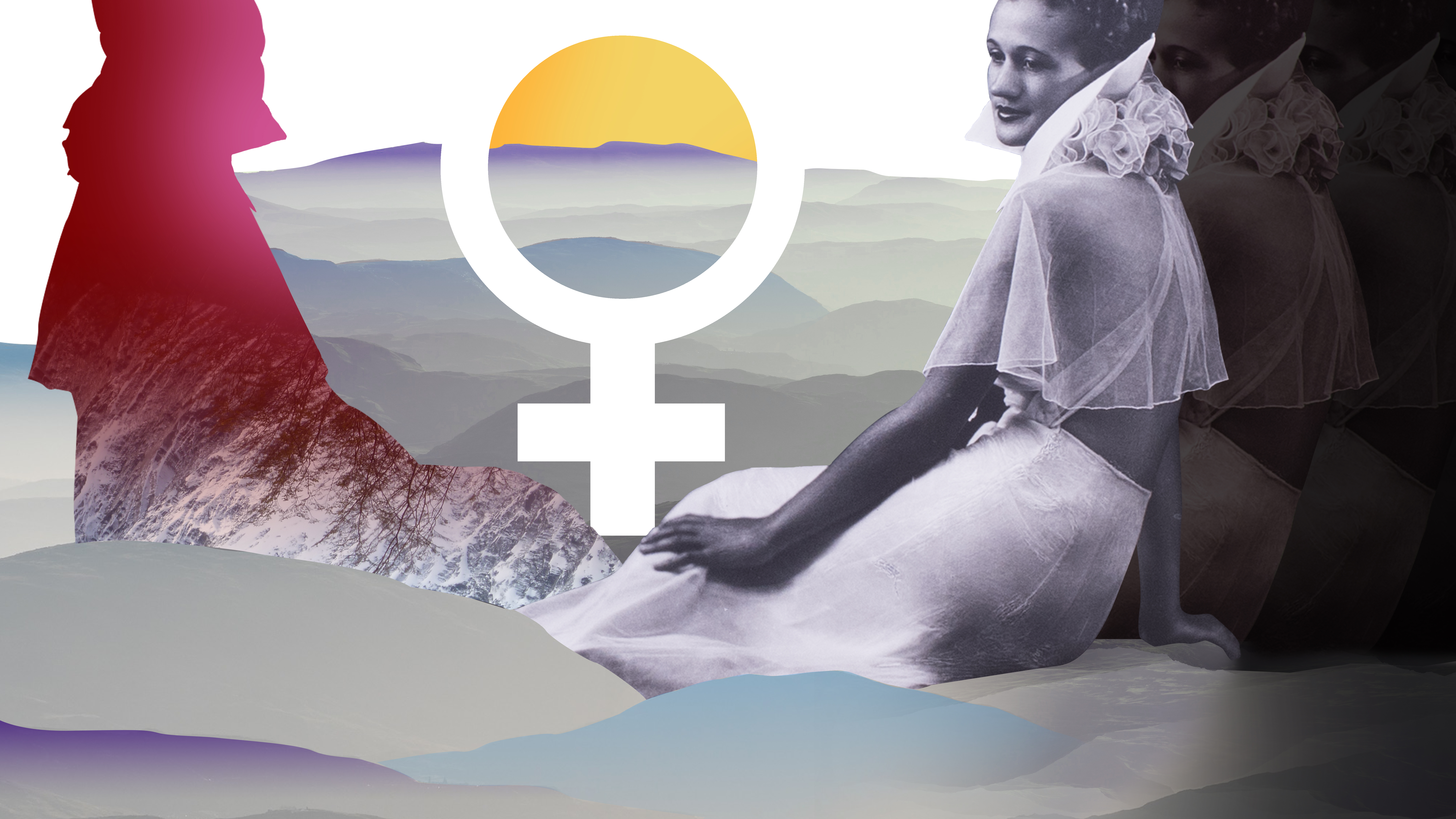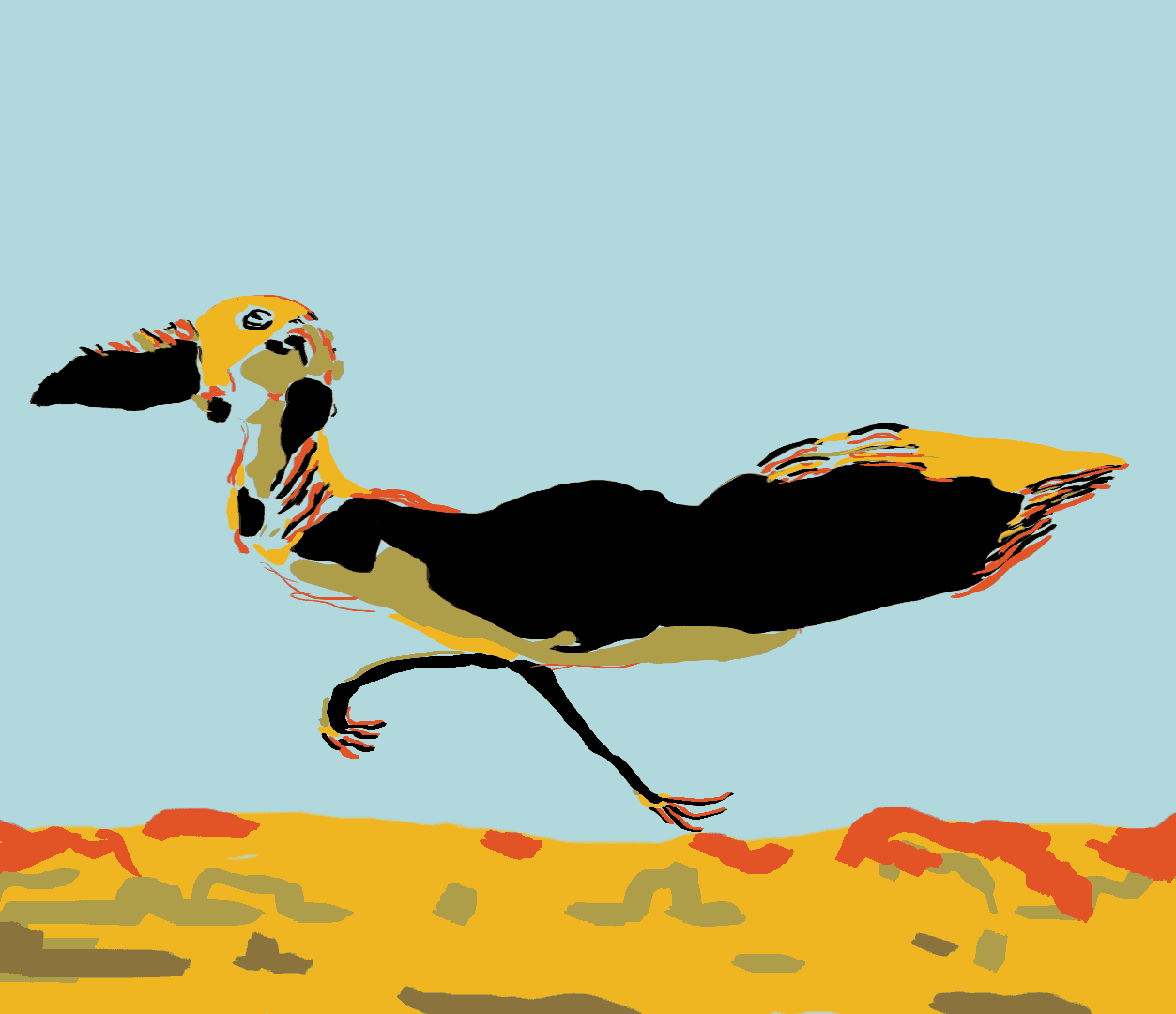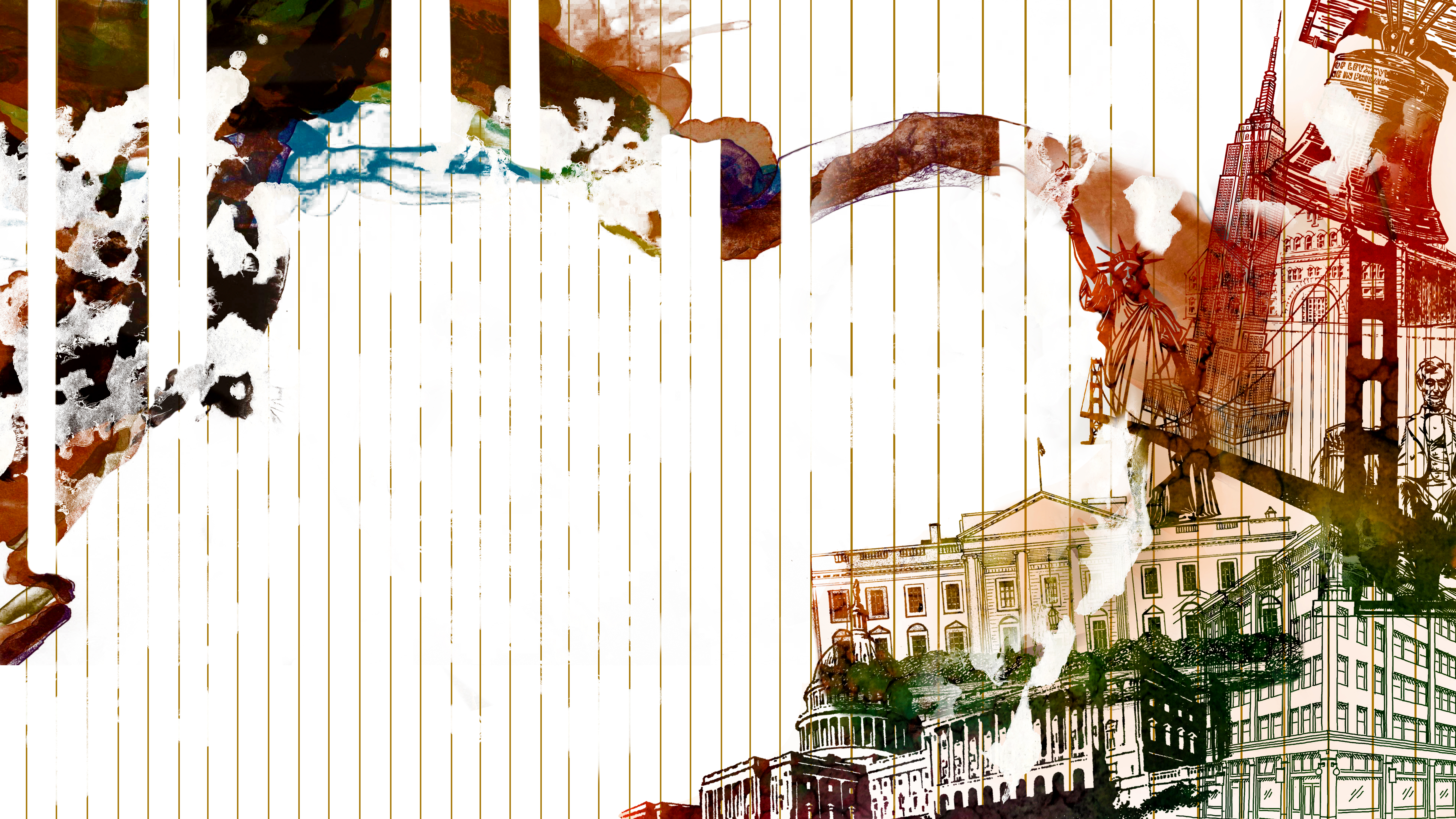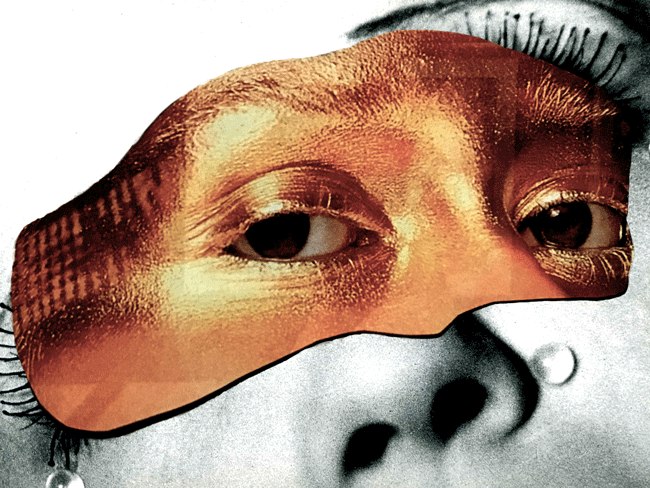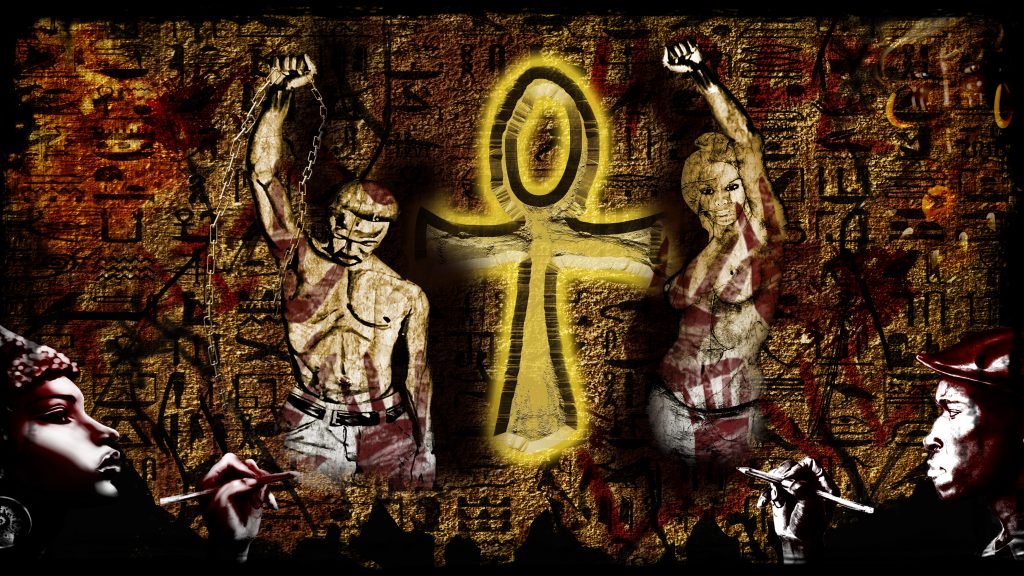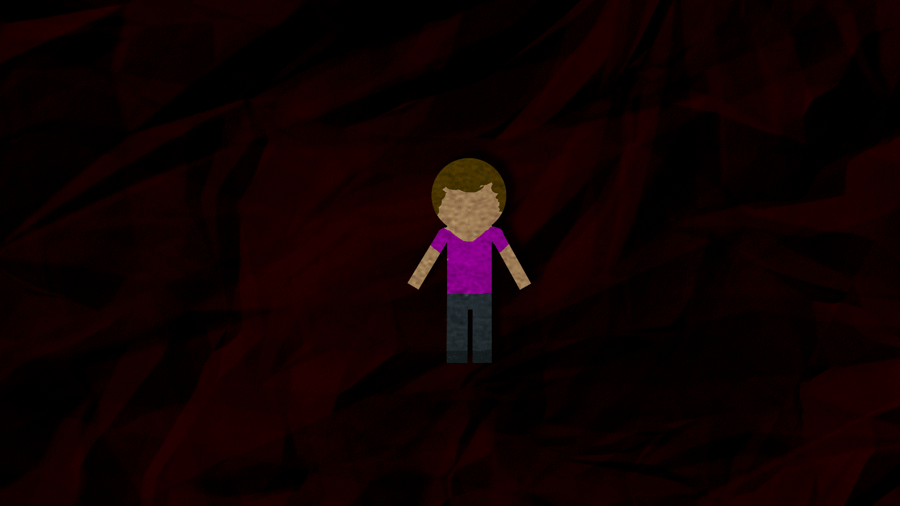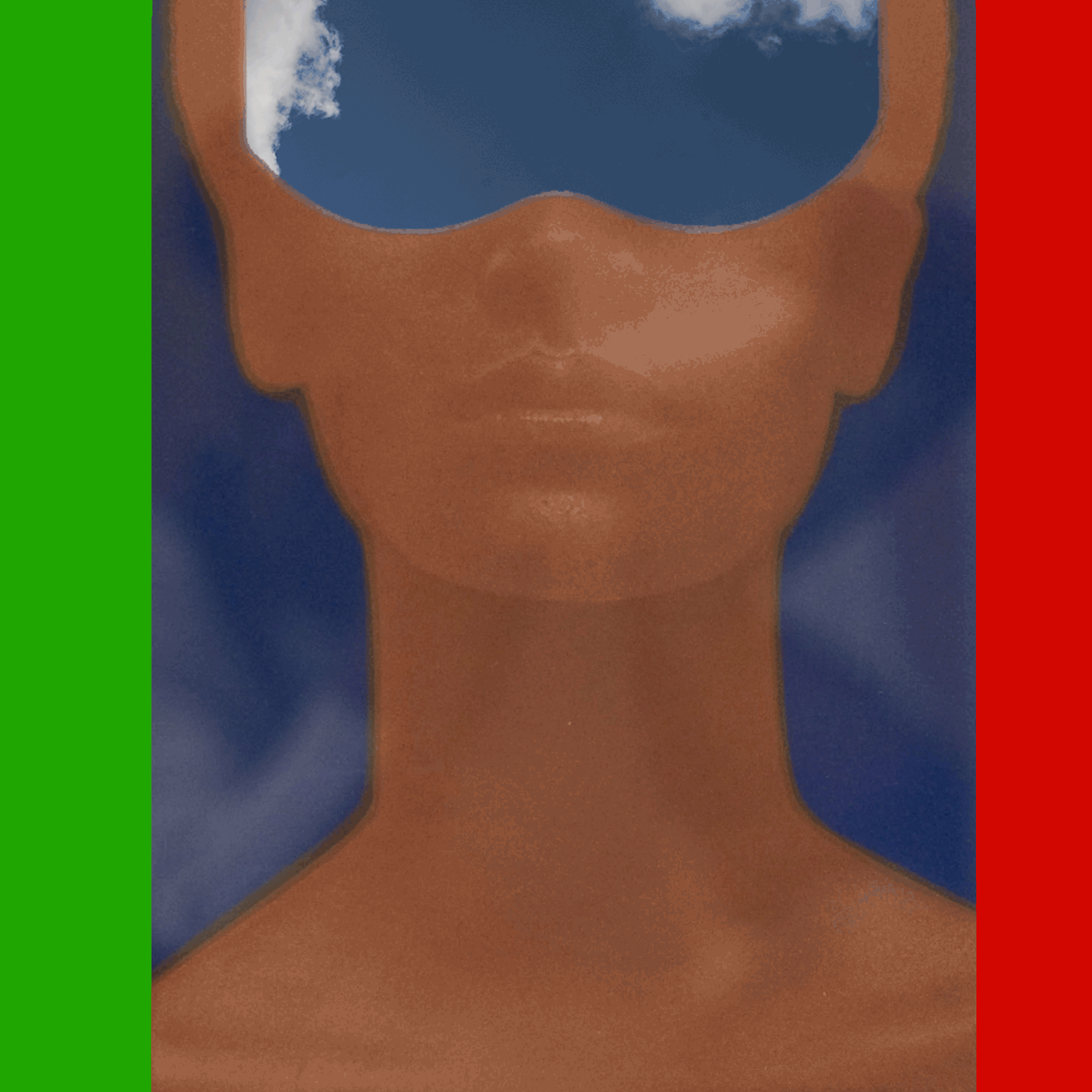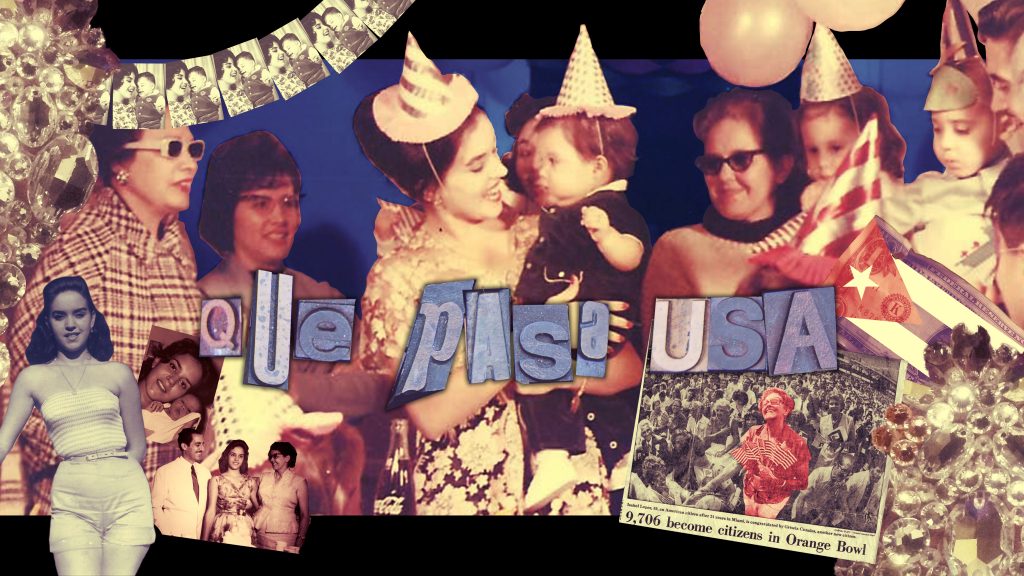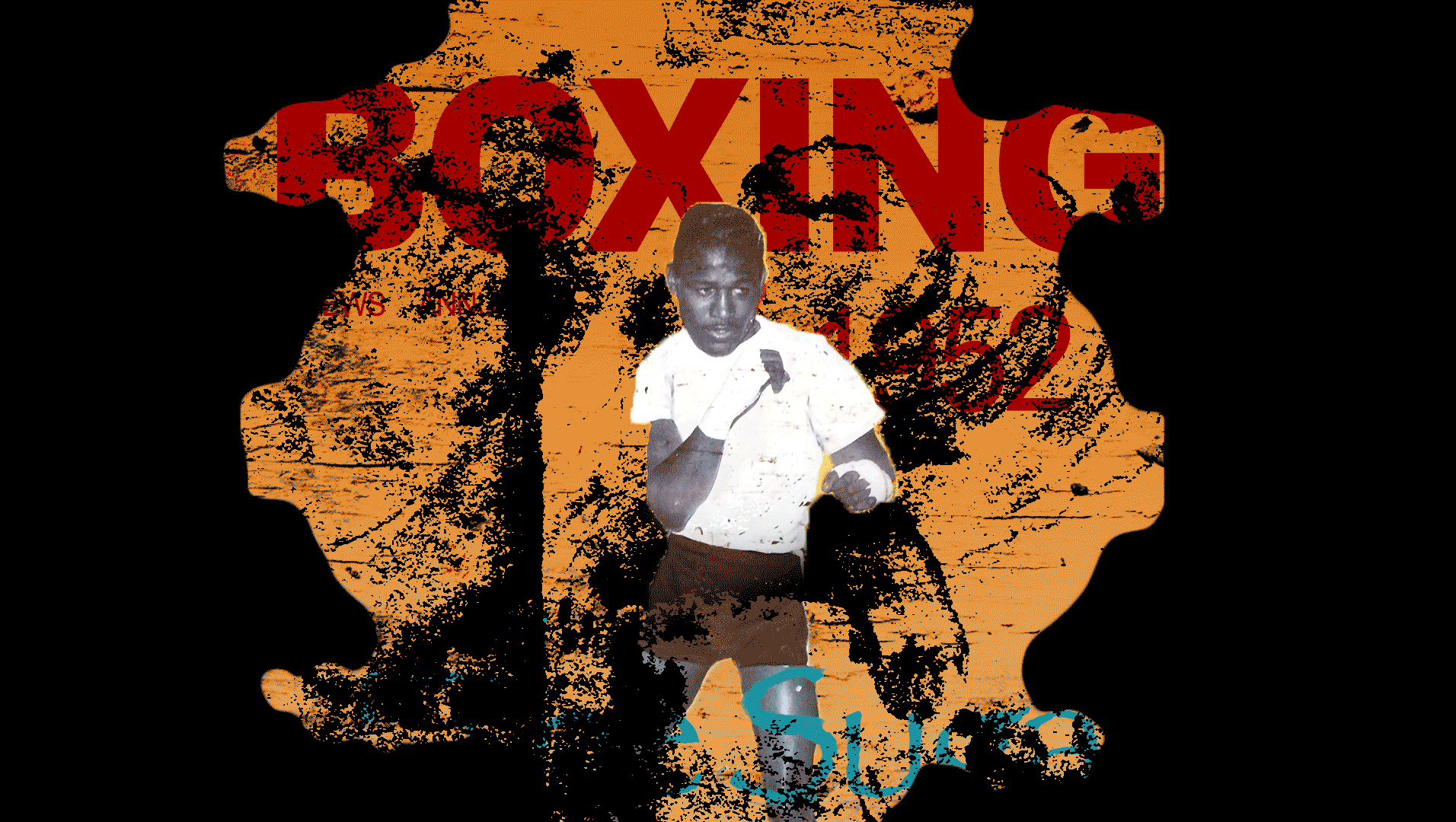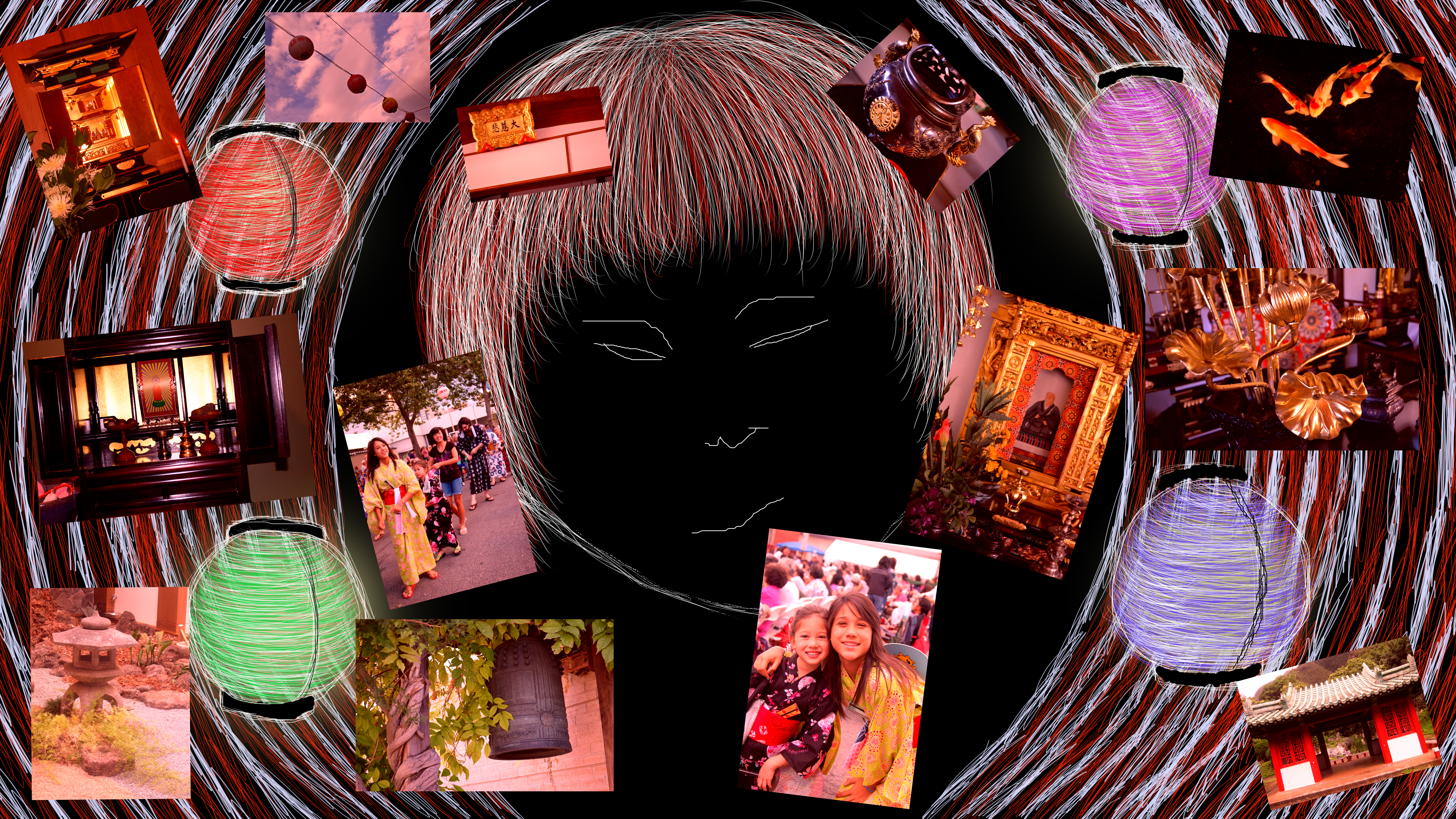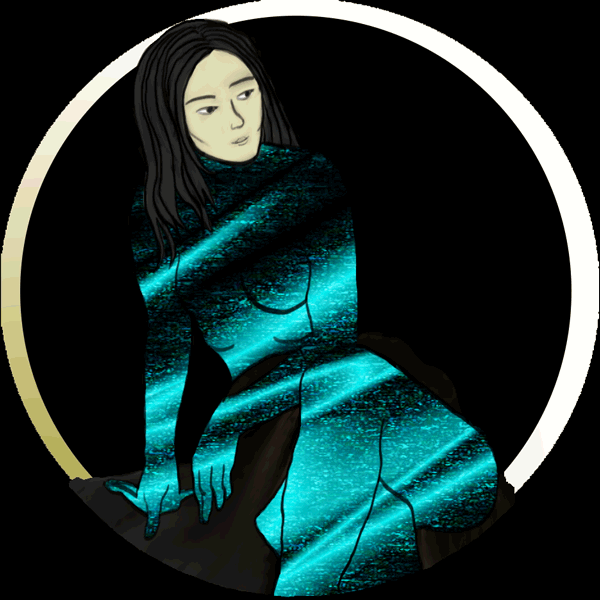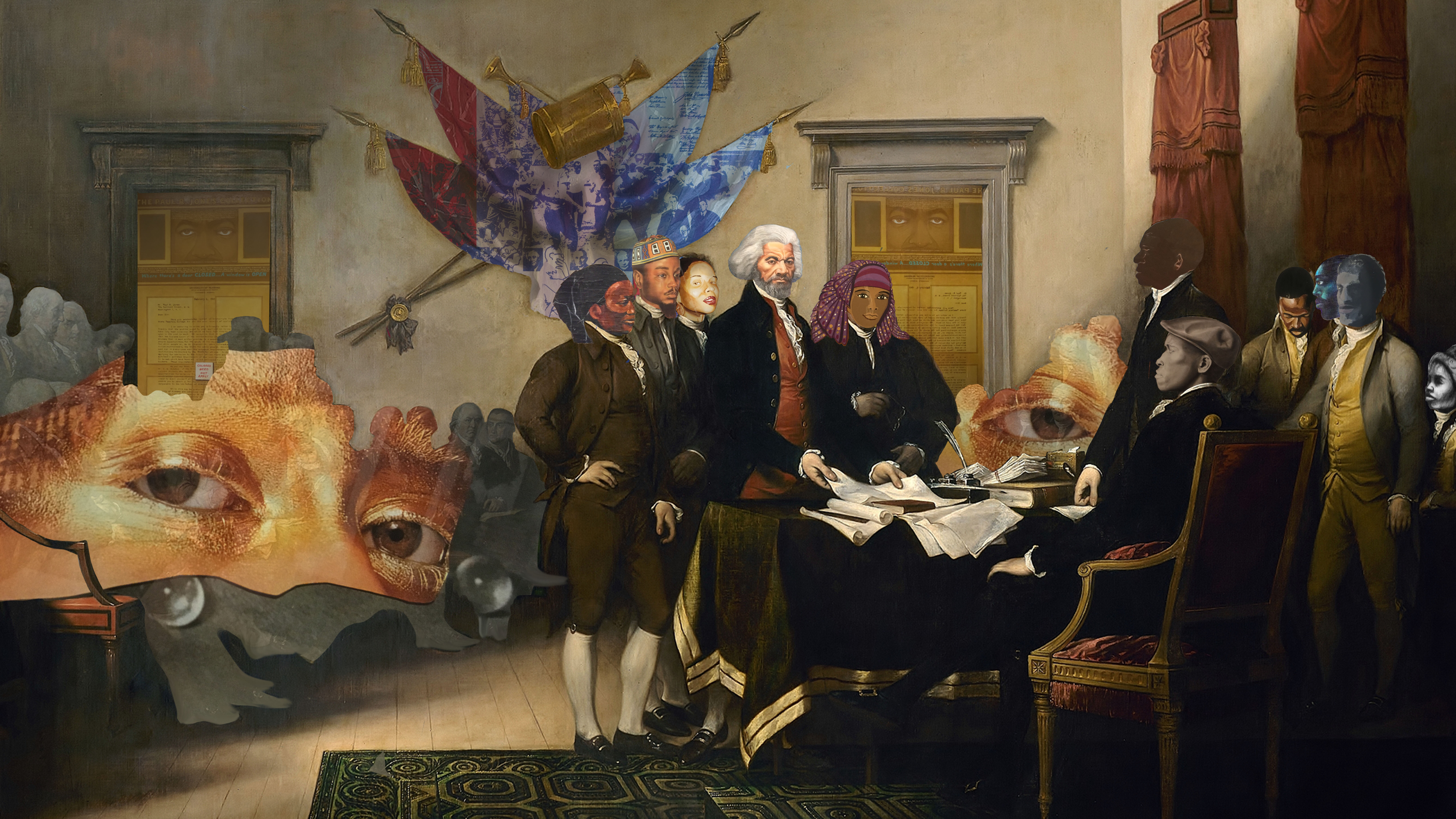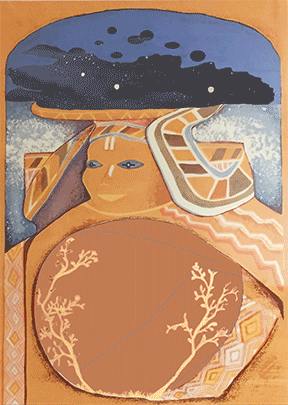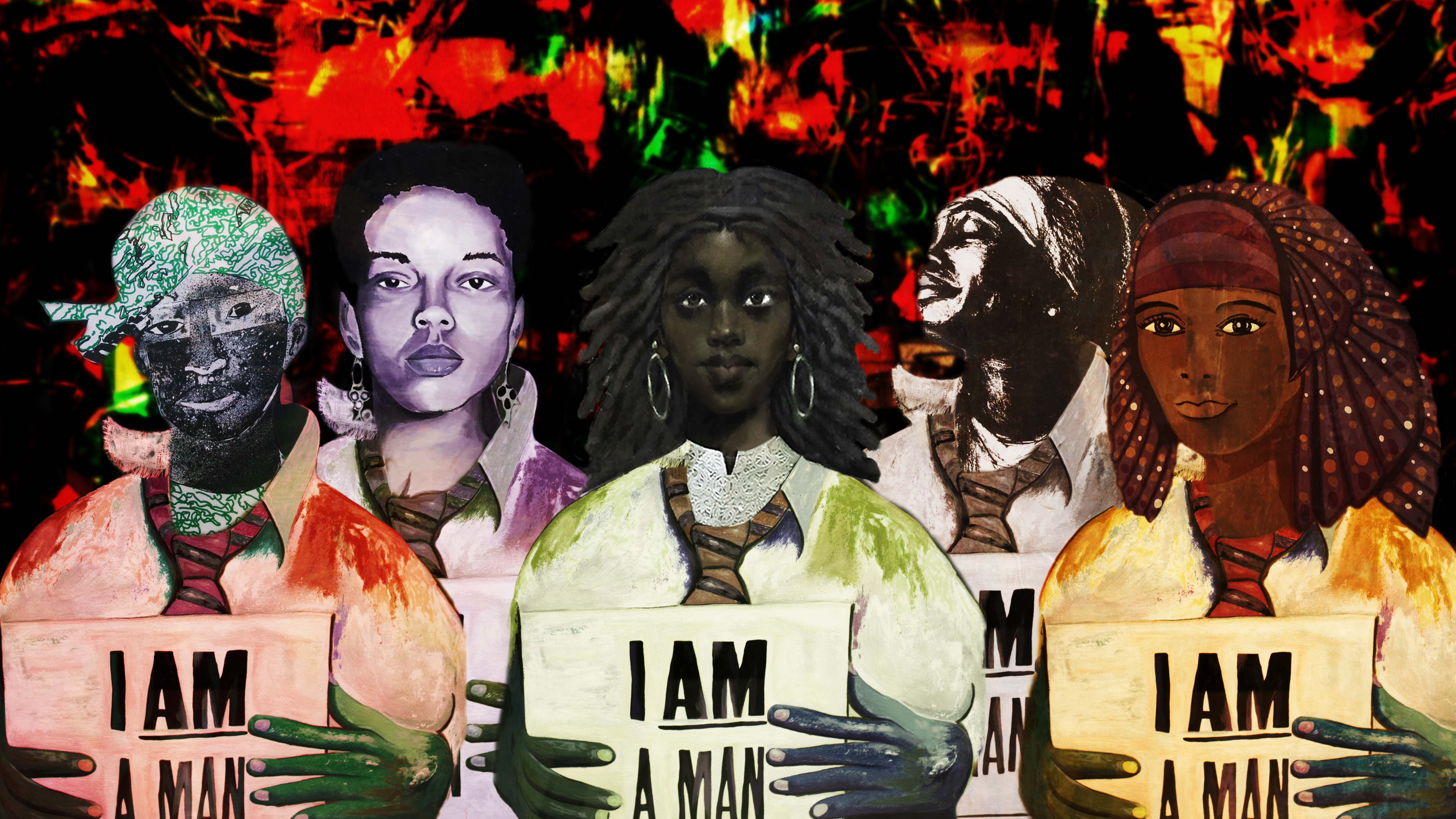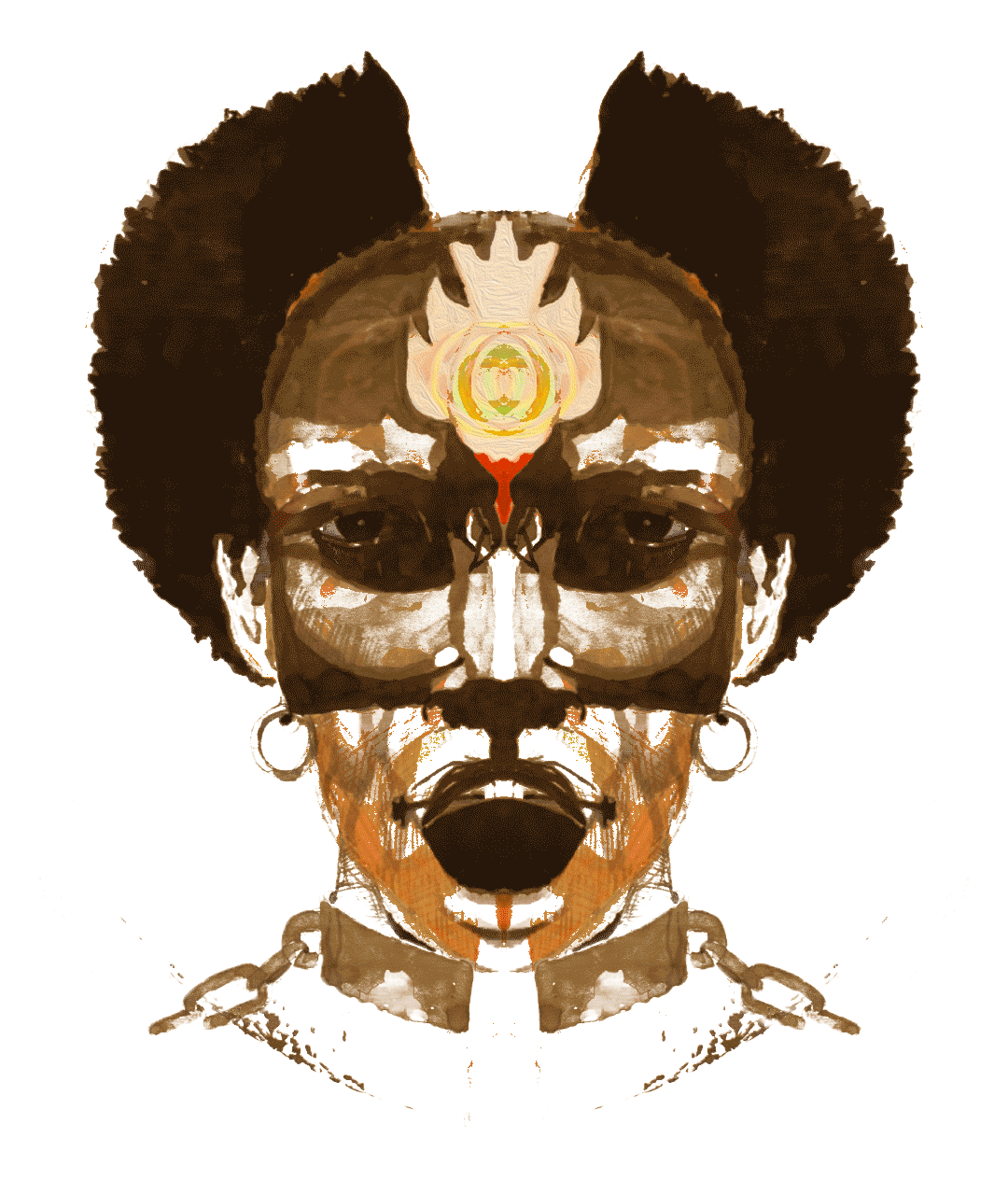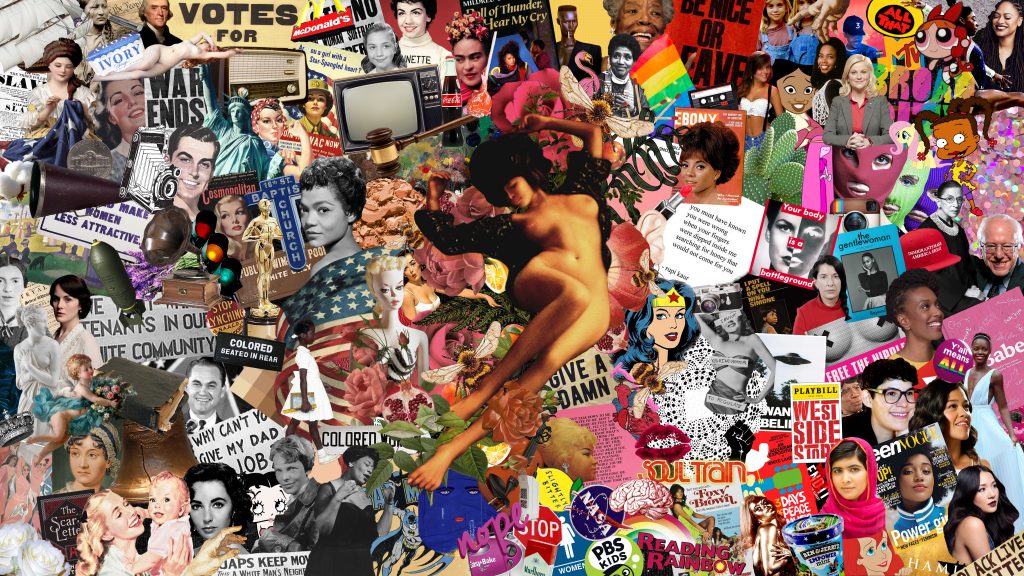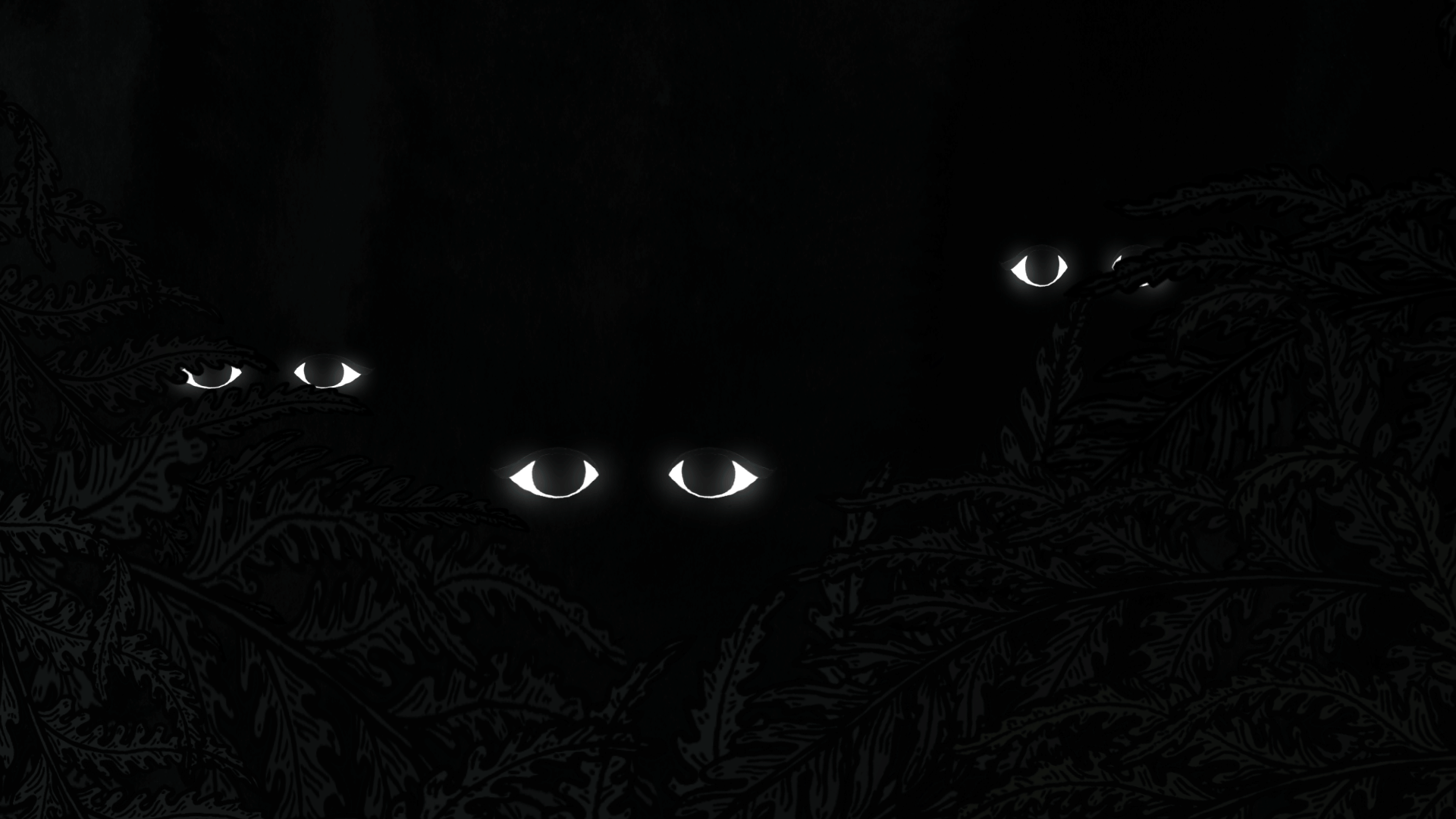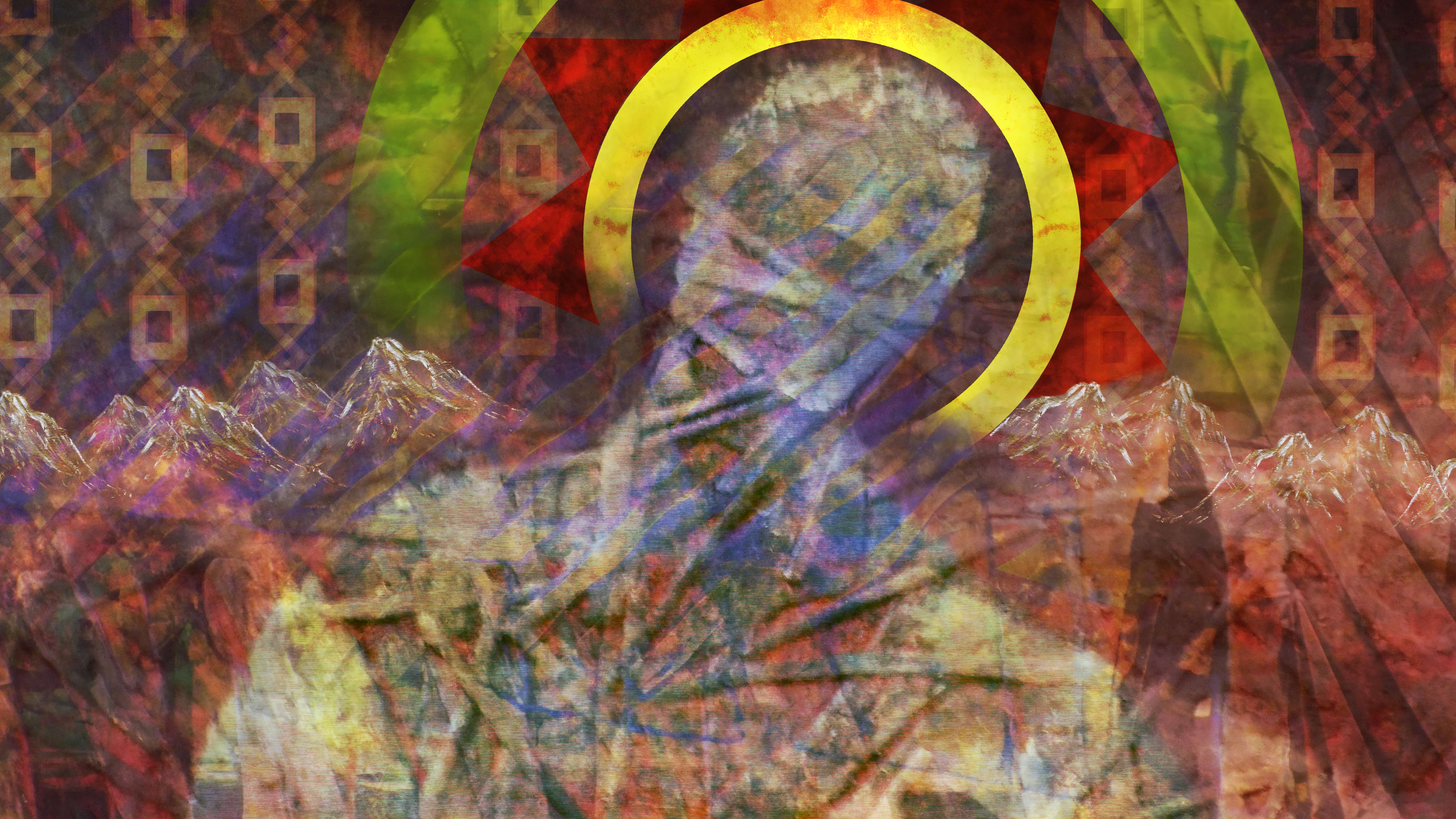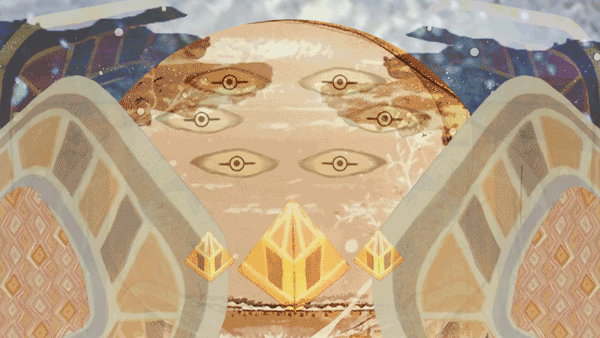Alex Green
What I find the be most captivating about the Jones Collection is the expansive narrative quality to the pieces inside of it. Artists like Wadsworth Jarrell, George Hunt, and Fahamu Pecou used their practices to tell personal stories about their lives, and the struggles they have encountered. When creating my video “Wounded”, I kept that idea of personal narrative in the back of my mind. The piece is about the past four years of my life in college and the hardships I have encountered. Many of the Jones Collection artists used their personal struggles as empowerment, and that was the goal of my piece. It is about taking you into moments in life that change the person we are. It faces the past, holds you in the present, and leaves you to think about the future of life after encountering struggle.
Kalypso Homan
My video, The Sand City and The Travelling Merchant Who Loved it Too Much, is based on the folktale traditions that are key cultural facets of so many African American communities. The writer and anthropologist Zora Neale Hurston wrote about the importance of storytelling tradition in black western culture during her travels across the American South and through the Caribbean. The aesthetics for my video were inspired by a piece in the Jones Collection by the artist Momodou Ceesay as well as the music video for Every Songbird Sings by Sam Beam and Jesca Hoop. I loved the watercolor animation style from the video and I loved the Sahara-esque landscape depicted as a backdrop in Ceesay’s piece. Ceesay himself said, “My objective is to take the viewer on a spiritual odyssey that suggests unseen dimensions.” I hope to do this with my story.
Maddie Kennedy
The Collection made an impression on me primarily for its exploration of African American cultural identity. For my video, I decided to explore the concept of cultural identity by interviewing people about their own cultural identity and how that fit in with their sense of self. I chose clips from the interviews to use as audio backing for short, animated visual vignettes. The goal of the vignettes was to give each quote a life of its own and to conceptually expand upon its meeting.
Sarah Kidd
My piece for The Jones Projection took inspiration from multiple artists in The Paul R. Jones Collection of American Art. It began with a couple of Amalia Amaki’s pieces of children dancing. From there I decided to experiment with light and movement using projection. My goal was to take pieces from the collection, animate them and then project them onto the human body. This would give these pieces another level of life and movement. Some pieces manipulated from the collection include pieces from Paul Steam, Amalia Amaki, Danny Simmons, Sam Gilliam, Felicia Grant Preston, Hans Bhalla, and Lionel Lofton. There was a whole blue section in the video dedicated to a specific Amalia Amaki piece, “Blue Lady”. The point of the piece was to explore the manipulation and movement of these original pieces. I like to think of the final product as “Art for arts sake”. Which affirms that art is valuable as art, that artistic pursuits are their own justification and that art does not need moral justification – and indeed is allowed to be morally neutral or subversive.
Joe Latham
Working with the Jone’s Collection, I was very inspired by the fact that there was/is an entire world of art that was done by African-American artists that I have not previously heard of. Being of mixed descent and being labeled as an African-American, I was drawn to the many pieces in the collection whether connecting with the material that was meant to speak to the ethic part of my being or the artist that lay inside as well. My work, I believe connects to the Jone’s collection in the sense of bringing art to life. The pictures used in my animation were drawn in the Fall of 2015 and reflect a time of isolation I dealt with until I realized that I did indeed have people around me I could connect with. I decided to animate these drawings to activate and bring to life drawings that were previously dead to me since 2015. Much like the art of the Jone’s Collection—which was dead to me until this assignment—I reached back into my past as well, and brought them into new light in hopes that they would be appreciated for what they were: A part of my history. Documented, and shared.
Cookie Morgan
Maria Oswalt
The inspiration for my video project comes not from one artist in particular, but rather, from Paul R. Jones’s enthusiastic promotion of black artists. He gave their works the recognition they deserved, and he pressured galleries, museums, and art historians to recognize them as well. Jones actively pushed against the whitewashing of art history on a large scale — not only that, but he also did so on a local scale, in his home state. As a fellow Alabamian, this inspired me to look more closely at the history of my own hometown: Muscle Shoals. The Shoals area is well known for its music history, and I chose to make that the focus of my project. More specifically, I chose black musicians from the area — such as W. C. Handy and Percy Sledge — who had a deep and powerful influence in Alabama’s music history. In my piece, clips of the Shoals area warp and slide across the screen, creating a distinctly Shoalsian (if you’ll allow me to make up a word) dreamscape. A poem flits by, setting the scene and eventually posing questions for the viewer. I hope to cultivate further consideration about the way we commemorate black artists after they’ve passed.
Chy Papac
The piece, Mitsuko’s Journey, is based on work from the Paul R. Jones Collection housed in Tuscaloosa during the Spring of 2017. The piece is a continuation of the Mitsuko series that I originally started in the Fall of 2016, but relates exclusively to concepts found in pieces from the Jones Collection. These concepts focus on themes of identity, more specifically the identities of people of color who live in the United States. I pursued this concept by creating an animation of a figure walking past icons from Japanese folklore and the “kawaii” internet culture. The combination of the elements represents my perceived identity as a Japanese-American. Additionally, since the figure is constantly in motion, her state of identity can be perceived as continually changing. Working on this project made me consider the importance of identity more seriously, which I hope to pursue further in future work.
Margie Powers
I was inspired to do this piece because it addresses the struggle many people face about their place in American society, which I felt was a recurring theme in the Jones Collection. How is your identity as an American affected when your fellow citizens view you as unequal or un-American? The tragic irony of Salman’s story is that he fit the “archetype” of being the quintessential American—he played football in high school, he loved Star Wars, he had a job in New York City, he felt a strong sense of patriotism for his country—but this wasn’t enough to erase his Pakistani and Muslim background when the Twin Towers were attacked. Which begs the questions, do citizens have to give up their heritage and religion in order to be fully accepted into American society? In order to become “fully fledged” American, do we have to strip ourselves of what American society deems “undesirable” such as our race, religious beliefs, or cultural practices? And what injustices result when we are unable or unwilling to do so? Salman’s story and the Jones Collection are a testament to these questions as they illustrate the stories of the people struggling to find their identities in a country that is struggling even today to accept them.
Chris Richmond
For my final animation I made An Optical Poem by timing up visuals to music. I found inspiration for this idea from the works of John Whitney and Oskar Fischinger. My creative process started with the abstraction of my favorite moments from the Jones Collections through masking out the works in Photoshop. I further abstracted the works by manipulating the color spectrum of all the moments I masked out. After making all the visuals, I timed them out in After Effects to the song Come by Lemon Jelly. I picked this song because of the lack of lyrics and its repetitive nature.
Teah Shaw
Animation was the only direction I could see myself going. After visiting The Jones Collection and taking in the range of art styles and mediums, I was so drawn to the immense world-building these artists could fit in a frame. And the more I thought on it, my piece came together. “Unravel” is a surreal, meta narrative inspired by textures and stories I gleaned from various paintings in the Collection. Amalia Amakie’s “Blue Lady” among other hyper-saturated pieces served as foundation. My final piece is a bridge between myself and some of the thoughts I had while making the work, and the lessons in storytelling I found in the colors and ideals of the works in the Collection.
Kirsten Wydra
My work with the Jones Collection is focused on more of the abstraction that can be found in it. I became particularly interested in Momodou Ceesay’s painting, The Oracle, and ended up using it in two of my projects for this class, including the video project. I used that piece, along with various pieces of other works, to create an abstract setting that had a vague concept behind it, but could also be defined by the viewer as well. I wanted to create something ‘spacey’ and unreal, without being unsettling. I like to frame a scene where it is clear something is occurring, but what specifically is up for others to decide.
